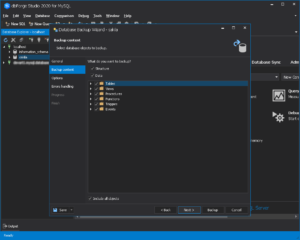

In this hands-on blog post, we will demonstrate how to implement a Cohort Analysis use case on top of the Databricks in three steps and showcase how easy it is to integrate the Databricks Lakehouse Platform into your modern data stack to connect all your data tools across data ingestion, ELT, and data visualization. The Databricks Lakehouse, which unifies data warehousing and AI use cases on a single platform, is the ideal place to build a cohort analytics solution: we maintain a single source of truth, support data engineering and modeling workloads, and unlock a myriad of analytics and AI/ML use cases. The thinking is that something about a cohort drives specific behaviors over time. This can be determined by the first time they ever made a purchase at a retailer, the date at which they signed up on a website, their year of birth, or any other attribute that could be used to group a specific set of individuals. A cohort is defined as a group of customers who share a common set of characteristics. It is an important use case in the field of marketing to help shed more light on how customer groups impact overall top-level metrics such as sales revenue and overall company growth. Cohort Analysis refers to the process of studying the behavior, outcomes and contributions of customers (also known as a “cohort”) over a period of time. If container is not running use below command to run container and try again to connect. If you are getting network related error make sure your docker container for sql server is up and running.

Step-7– You should be able to connect as given below. Provide sql server name and credentials which you have setup in step-2 above. Step-6 -Now let’s try to connect with Azure Data Studio. Step-5 – Connect MSSql server using sql-cli command line tool using below command (Make sure your docker sql container is running ). Prerequisite : Nodejs should be installed for using sql-cli sudo npm install -g sql-cli If you want to connect using sql-cli command line tool. Step-4– Now your sql server is ready to connect but it can be connected by command line tool (sql-cli) or Azure Data Studio (GUI tool). Step-3– Check docker container for sql is running by using below command.

If you downloaded a different one, use it instead. This is the default TCP port that SQL Server uses to listen for connections. This maps the local port 1433 to port 1433 on the container. Required parameter that sets the sa database password. This is required in order to have SQL Server for Linux run on your Mac. The Y shows that you agree with the EULA (End User Licence Agreement). This parameter allows you to name the container. You can omit this parameter to have the container run in its own Terminal window.Īnother optional parameter. It runs in the background and doesn’t need its own Terminal window open. sudo docker run -e "ACCEPT_EULA=Y" -e "SA_PASSWORD=XXXXXX" \-p 1433:1433 -name sql1 -h sql1 \-d /mssql/server:2019-latest Step-2– Run the following command to launch an instance of the Docker image you just downloaded and you can set sql server name (sql1) or password. This downloads the latest SQL Server 2019 for Linux Docker image to your computer. sudo docker pull /mssql/server:2019-latest Open a Terminal window and run the following command. Step 1– After installing docker, we can download and install SQL Server for Linux. Note – After installing docker, By default, Docker will have 2GB of memory allocated to it. (Azure Data Studio, a cross-platform database development tool and provide seamless database management experience, regardless of whether users are connecting to on-premise or Azure-based data platforms.) So let’s start to connect MSSql Server on your mac machine.Ģ- Install Azure Data Studio from here. The way to do this is to run SQL Server on Docker. And because macOS is Unix based (and Linux is Unix based), you can run SQL Server for Linux on your Mac. īut now starting from SQL server 2017 you can now install SQL Server directly on to a Linux machine. You need to create windows virtual machine by using virtual-box or some other tool and then install SQL server on top of it. Prior to SQL Server 2017 ,If you are using Mac and you want to connect MSSql Server on Mac. In this tutorial ,I will show how to connect Microsoft SQL Server on your Mac machine.


 0 kommentar(er)
0 kommentar(er)
